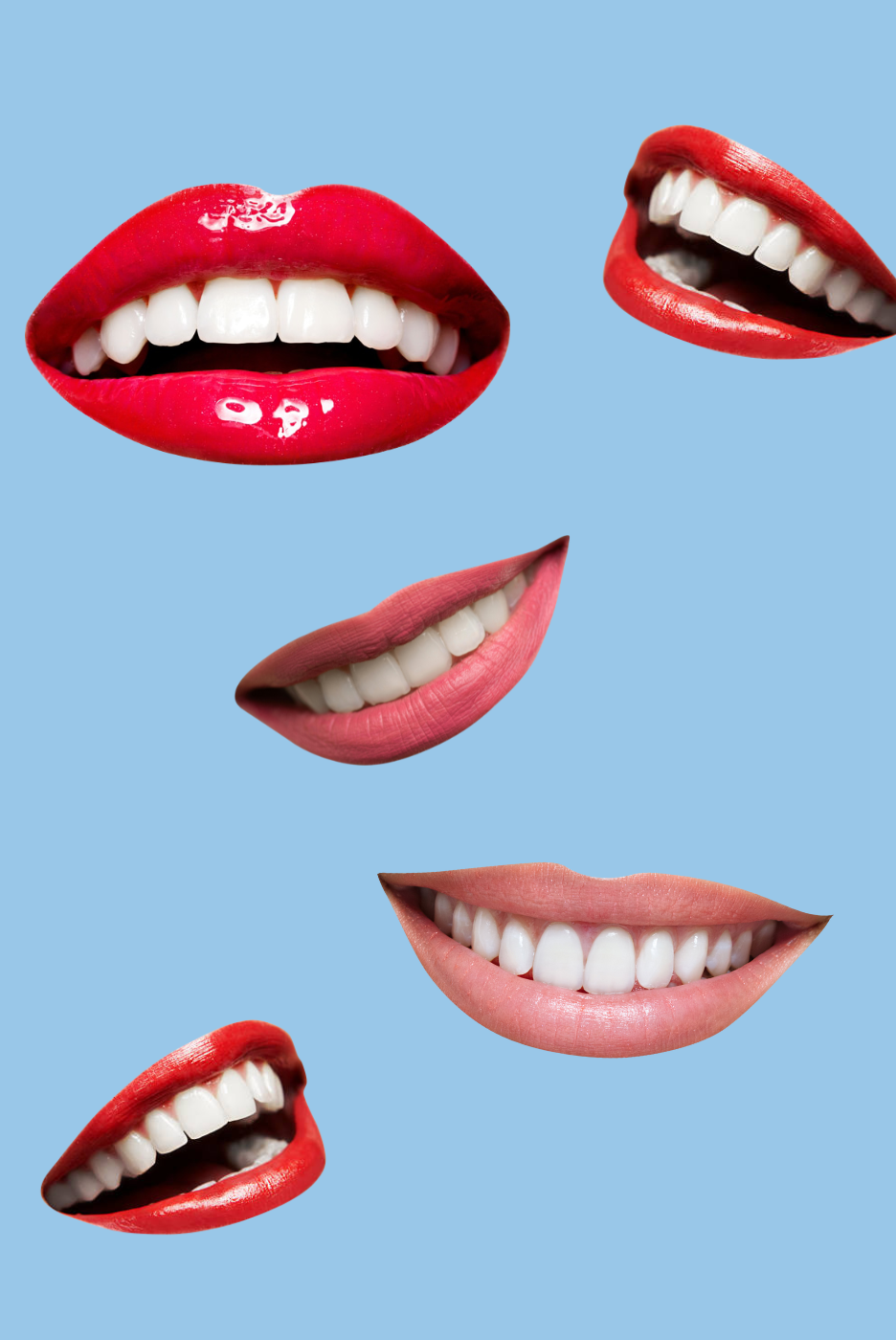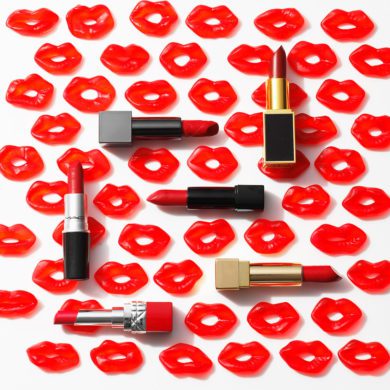Scrolling through this year’s Oscars coverage, I did a double take on Emma Stone. It was the actor’s smile, not her wardrobe malfunction, that stopped me: to my not-a-dentist eyes, her teeth looked… bigger? Fuller? Like they took up the entire space between her top and bottom lip?
It wasn’t just me who thought that Stone’s teeth looked suspiciously perfect.
Over on TikTok, cosmetic dentist Dr Sara Hahn had also clocked the actor’s evenly spaced, ramrod-straight teeth and concluded they were “probably veneers”.
She should know; for the past two years, Dr Hahn has been dissecting celebrity smiles under the Tiktok handle @veneercheck. There, she offers her 165,000 followers deep dives into pressing issues like Anne Hathaway’s mottled canines or the enduring mystery of Anna Kendrick’s dental work. And she isn’t the only one; there are countless other TikTok dental sleuths analysing A-list teeth.
The popularity of these accounts helps illustrate just how obsessed we’ve become with achieving the perfect smile.
For although arctic-white teeth are not new in Hollywood, we’re increasingly seeing those teeth out in the wild.
These days, everyone from your best friend to your barista is sporting celebrity-perfect, blindingly white smiles, thanks to home-bleaching kits or Invisalign treatments.
And it’s not just our smiles getting a glow-up; the whole dental industry has had a makeover. Forget the sterile dental practices of old – today’s “dental spas” are much more bougie. (Take at Dental + Skin, which promises to “unlock your beauty” in its state-of-the-art clinic in south-east Melbourne.) At the Calile Hotel in Brisbane, guests can even book a teeth-whitening treatment alongside their facial at the in-house spa.
In short, we’ve become fixated on fixing our teeth.
And why not? Countless studies show that people with straight, white teeth feel more confident, socialise more and perform better in job interviews than those with uneven chompers. Anyone who has had a whitening treatment knows that they can take years off your appearance.
As The Washington Post’s Jessica M Goldstein recently wrote: “Veneers are to teeth what suntans are to the skin and dye is to the hair.” Or as The Guardian recently put it: “Teeth whitening HAS become the new boob job”.
In the quest for perfect teeth some Aussies are even heading overseas, and the trend is so pronounced it even has a name: “Turkey Teeth” in reference to one of the most popular destinations. “We’ve seen a lot of people having beautiful veneers done in Turkey or Thailand or Vietnam, but underneath their teeth are rotten or have cavities,” says Dr Jack Yang, a dentist and cosmetic dentistry specialist.
We’ve seen a lot of people having beautiful veneers done in Turkey or Thailand or Vietnam, but underneath their teeth are rotten or have cavities
The consequences can range from amusing (search #turkeyteeth on TikTok or Instagram) to downright dangerous (this is horrifying).
The perils of heading overseas for cheap dental work may seem obvious, but what about the risks of DIY teeth-whitening treatments happening closer to home?
Serious complications are rare, experts agree, but include sensitivity to hot or cold temperature or damaged enamel, which could lead to long-term problems such as increased risk of cavities and tooth decay.
A better combination is straight, unblemished teeth—no visible fillings, chips or wear facets—with some warmth in the colour, so the face and teeth look like they belong together.
Got that? The face and teeth, not the mouth and teeth, must be harmonious, and factors like age, gravity, injectables, surgery, Ozempic, all affect how your face looks and whether or not it can carry a perfect set of teeth.
When crafting a patient’s smile, Dr D’Anna considers the macroaesthetics (the whole face), miniaesthetics (lips and lip position, the flow of teeth, the display of gum and lip function as someone communicates), and microaesthetics (each individual tooth). “Traditionally, dentists are great at micro-aesthetics, but cosmetic dentists address all three components [to] create balance, proportion and beauty in our work.”
To avoid looking like you’ve swallowed a piano, as a very general rule, teeth colour should be aligned with the whites of the eyes, “around 1-2 shades brighter is acceptable, anything whiter than that will focus attention to the teeth,” advises Dr D’Anna.
But safety aside, the big question is whether bright, white teeth actually look better?
Because what they don’t always look is natural. When describing tooth colour, dentists use adjectives like reddish-brown, reddish-yellow, grey, and reddish-grey, which “represent the various hues and tones found in natural teeth,” explains Dr Yang.
Notice which adjective they don’t use? White, because natural teeth are not pure white. (They’re also not smooth and opaque, just FYI.)
As a very general rule, teeth colour should be aligned with the whites of the eyes
The other consideration is whether your new teeth look like they belong in your mouth?
“Perfectly straight and overly-white teeth in someone that doesn’t have the facial aesthetic to match, say a 70+ year old with sun-damaged skin, can make that person look like they have dentures,” cautions Dr Giulia D’Anna, a dentist and cosmetic practitioner.
For women, “the edges of the upper teeth should gently curve upwards, without gaps, so the two front teeth should be slightly longer than the next two teeth (lateral incisors) and the canines should be slightly shorter again, and in men, the canines should/can be as long as the central incisors, which gives a more masculine appearance.”
Also, ask yourself: do your teeth really need fixing? Really, really?
Because while better technology and materials, and lower costs, have made whitening and veneers more accessible—I mean, that’s relative: veneers are upwards of $2k+ per tooth—mess around with otherwise perfectly healthy teeth and regrets may soon follow.
When Dr D’Anna sees patients with veneer remorse, it’s either financial (the patient took out a five-year payment plan and they’re still paying it off), social (they’re embarrassed by comments or stares), or structural, where patients with excellent dental health and no fillings chose to have porcelain veneers in their 20s or 30s to achieve their smile goals at that time and now need to replace dental work. (Veneers generally need to be replaced every decade or so.)
And that’s setting aside Dr Hahn’s suspicion that “perfect teeth” are destined to be a temporary fad, and will eventually go the way of skinny eyebrows and become a relic of their time. And while it’s easy enough to correct a bad hair-dye job or fix a patchy fake tan, trying to redo your teeth is much more difficult to swallow.














No Comments